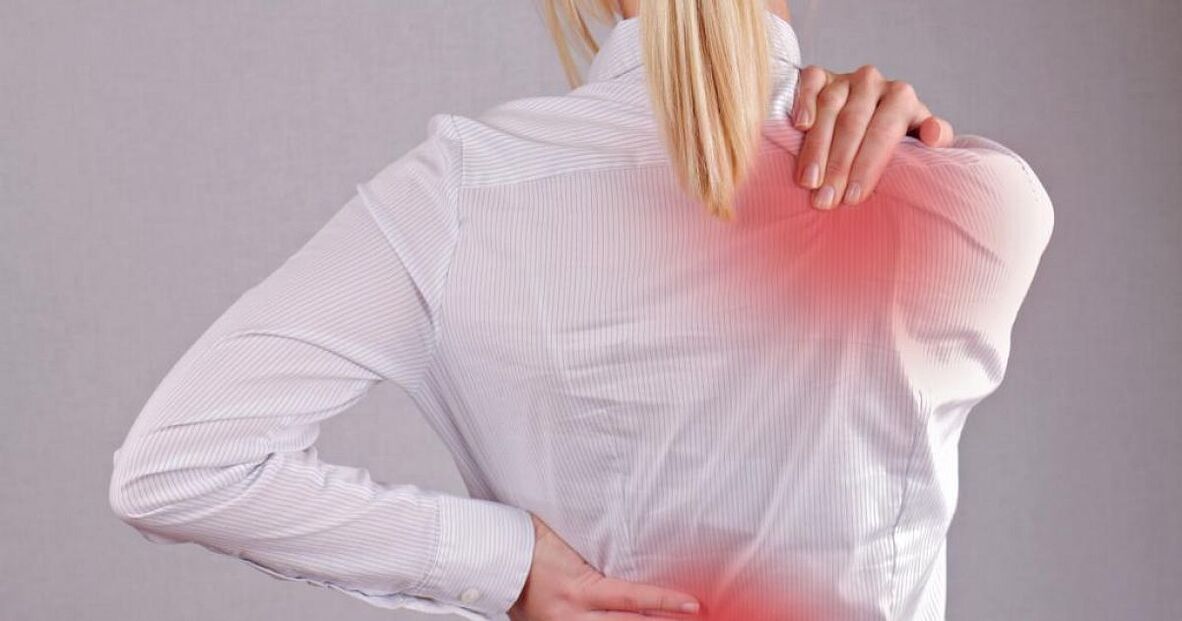
Back pain is most common in older people, however, due to a number of reasons, it can also occur in younger people.Almost all adults are familiar with periodically feeling pain in the back, which is explained by the fact that this part of the body has a special predisposition to various types of injuries.Most back pain can be easily treated and prevented, however, sometimes the cause of back pain can be quite serious, such as degenerative joint disease.
In addition, back pain can be caused by any disease of the gastrointestinal tract, the presence of kidney stones or other problems with the human urinary system.
Back pain can be in the lumbar region or between the shoulder blades and can also cause pain in the arms or legs, depending on the cause of the pain.
Causes of back pain
The main causes of back pain include diseases such as osteoarthritis, spondylosis, radiculopathy, scoliosis, disc herniation, osteoporosis, muscle pain and serious spinal circulatory disorders.
Additionally, back pain can be caused by being overweight, strenuous physical activity, including those that involve lifting heavy objects, poor posture, or certain types of infections.
Factors that contribute to back pain
In cases where back pain is caused by a medical condition but there is no treatment, the pain tends to return and gradually decrease depending on the presence of factors that contribute to this phenomenon.For example, a return of back pain can be caused by hypothermia or heavy lifting, as well as when a person is in an uncomfortable position for a long time.Additionally, the infection can cause pain to return to the body.
Main symptoms of back pain
Signs that you need to see a doctor and get examined are back pain that does not improve within a period of 3 to 5 days, as well as when the accompanying body temperature is above 37.8.
Back pain may be accompanied by frequent and painful urination, vomiting and nausea, numbness of the limbs, and diarrhea.These are all symptoms that should prompt you to see your doctor immediately.
If along with pain in the back there is difficulty moving the arms or legs and confusion, it is extremely important to consult a doctor as soon as possible.
Diagnosis of back pain
If there is pain in the back, testing methods such as neurological examination and X-rays, CT and MRI scans as well as manual diagnosis will be used.
Often, during X-ray examination in older people, osteoarthritis is detected.
Immediately after visiting the doctor, a medical history is taken, symptoms and complaints are clarified in detail, after which additional tests are prescribed.
When compiling the history, the location of the pain, its irradiation, the patient's emotional state are clarified and the presence of a relationship between the appearance of pain and the person's location is revealed.The presence of an old back injury is also important.
To determine the presence of any tumors and infections, an examination of the body is performed.
Back pain treatment
To treat different types of pain, depending on the cause that causes it, treatment methods such as manual therapy, medication and physiotherapy, as well as exercise therapy, post-isometric relaxation, surgery, traction, intervertebral and paravertebral blocks are prescribed.Compulsory adherence to a proper orthopedic regimen is also required.
When treating osteoarthritis, you should avoid sudden movements and especially bending, and you should mainly rest.In cases of acute cartilage degeneration, the patient should not go to a medical facility and be treated at home.In this case, non-steroidal anti-inflammatory drugs, pain relievers, muscle relaxants are prescribed, and it is recommended to sleep on a hard bed, using a special barrier under the mattress.
When treating disc herniation, surgical intervention is used in cases where the patient has spinal cord compression, which is quite rare.
Chronic back pain
The presence of chronic back pain often indicates osteoarthritis; treatment takes from 5 to 15 sessions, depending on the intensity of the pain.The treatment includes acupuncture, vacuum therapy, acupressure, chiropractic, hirudotherapy and stone therapy.
If we talk in more detail about each of the listed methods, we can note the good effect of acupressure, which helps eliminate muscle spasms and excessive tension, while promoting blood circulation.In addition, thanks to manual therapy, dysfunction of the spinal joints is also effectively eliminated.And provided the patient follows the doctor's recommendations after completing the course of therapy, the discs will continue to heal on their own.
If you have a herniated disc, treatment is a fairly long process, gradually reducing the herniation and reducing the pain.A full course of treatment allows you to completely restore the normal function of the affected disc.
























